








Funky Roots Reggae
Wed Oct 2, 2024 • 7PM
DOORS • 5:30PM
A very special Ipso Facto performance featuring all original members makes a rare appearance to honor recently departed former Dakota Executive Chef Remy Pettus on his birthday, Wednesday Oct 2, at Dakota, 1010 Nicollet Mall, Minneapolis
They will play some new songs created by Wain McFarlane in collaboration with Chef Remy. Old friends Jellybean Johnson (guitar), Bobby Vandell
(drums), and Brian Ziemniak (keyboards) have been invited to join in the commemorative celebration.
Ipso Facto is a Minneapolis-based reggae/ funk/jazz band that has played for audiences around the world.
The rock-style reggae band was formed in 1986 by three brothers: Wain, Juju and Greg McFarlane, introducing Wain McFarlane’s musical vision of a unique fusion of sounds. As in the beginning, McFarlane still today blends his paternal Jamaican roots reggae legacy and maternal lineage gospel-blues-jazz of his birthplace, Kansas City. Ipso Facto’s eclectic performance drives
guitar-propelled examination of Mississippi Delta field music, conjuring revelations of timeless spirit. From the
drum-summoned ancient past to cosmic futures, Ipso Facto indeed delivers the musical, the magical and the mysterious.
Moreover, McFarlane’s performance is propelled by a sense of urgent abandon beneath a knowing smile that captivates, illuminates, transforms and satisfies.
The Dakota performance features classic Ipso Facto block-buster songs and new material. As always, expect master-class improvisation that breathes in the energy of the moment. Further, he delivers an experience that
wrings familiarity from music being newly minted in live performance. Thus, he taps the hidden power of songs we thought we knew.
The Dakota performance also features Rion, who fell in love with the electronic music scene as a youth and started pursuing his dream career at the age of 15. Rion has perfected his craft and now, with his debut releases “Genesis” (ft. Sandro Silva & Max Adrian) and “Aware” (ft. Max Adrian & Antheros), declares he’s ready to take over the dance scene.
A weakened Hezbollah is being goaded into all-out conflict with Israel – the consequences would be devastating for all
By Asher Kaufman Professor of History and Peace Studies, University of Notre Dame
For almost a year, Israel and Hezbollah have engaged in increasingly provocative crossborder skirmishes as onlookers warn that this escalating war of attrition could land the region in all-out conflict. The past few days have made that devastating scenario closer to a reality. First came Israel’s pager and walkie-talkie attack, an unprecedented assault on Hezbollah’s communications that injured thousands of the organization’s operatives. It was followed by the assassination of Ibrahim Aqil, a key Hezbollah leader, who died in an airstrike that also killed other senior commanders of the militant group, as well as some civilians. Hezbollah responded by extending the geographical range of its rockets fired at Israel, targeting both military facilities and civilian neighborhoods across northern Israel. Israel then launched a fresh air assault in which more than 270 people were killed, according to Lebanese health authorities, leading also to the flight of thousands of residents from South Lebanon to the north of the country.
As a scholar of Lebanon and Israel, I have followed the dynamics of this war of attrition since Oct. 8, 2023, the day after Hamas executed an unprecedented and deadly attack on Israel, which responded by bombarding the Gaza Strip. Hezbollah then began firing rockets into northern Israel in solidarity with Hamas in Gaza.
Despite the high rhetoric and mutual threats of destruction, until recent days neither Israel nor Hezbollah, nor the latter’s sponsor Iran, have shown an interest in a full-scale war. All parties surely know the likely destructive consequences of such an eventuality for themselves: Israel has the military power to devastate
Beirut and other parts of Lebanon as it did in Gaza, while even a weakened Hezbollah could fire thousands of missiles at Israeli strategic sites, from the airport to central Tel Aviv, water supply lines and electricity hubs, and offshore gas rigs.
So instead, they have exchanged fire and blows along their shared boundary, with somewhat agreed-upon red lines concerning the geographical scope of attacks and efforts not to intentionally target civilians.
But Israel’s recent attacks in Lebanon may have turned the page of this war of attrition into a new and far more acute situation, putting the region on the brink of a full war. Such a war would wreak havoc in Lebanon and Israel, and might also drag Iran and the United States into direct confrontation. In doing so, it would also fulfill the apparent of the Hamas gunmen who murdered around 1,200 Israelis on Oct. 7 in the hope that a heavy-handed Israeli response would draw in more groups across the region.
A dangerous ‘new phase’
Hezbollah’s secretary general, Hassan Nasrallah, has insisted throughout the nearyearlong hostilities that his organization would hold its fire only if a cease-fire agreement is reached between Israel and Hamas. In recent weeks, however, Israel has taken the conflict in the opposite direction.
The country’s defense minister, Yoav Gallant, described the coordinated attacks on Hezbolah targets as a “new phase,” adding that the “center of gravity” in the war was moving north into Lebanon. The Israeli government has added the “return of the residents of the north securely to their homes” as an additional war goal.
The assault on Hezbollah’s communications system targeted the organization’s operatives but hit many civilian bystanders, leaving Lebanese in shock, trauma, anger and desperation.
It demonstrated Israel’s tactical military advantage over Hezbollah. The unprecedented penetration into the heart of the organization’s command and rank-and-file structures has never been seen before in any conflict or war globally. It struck Hezbollah in its most vulnerable places and even exposed its coordination with Iran – one of the injured persons from the pager explosions was the Iranian ambassador in Lebanon.
The killing of Akil two days later was another signal that the Israeli government had now decided to try to change the rules of this risky game of reprisals and counter-reprisals.
It is clear that rather than the uneasy status quo that defined this war of attrition for nearly a year, Israel’s intent is now to pressure Hezbollah to concede.
Getting out of control
Nasrallah delivered a gloomy and defiant speech in the aftermath of the pager attack. While acknowledging that Hezbollah was severely undermined by this operation, he defined the Israeli attack as a continuation of “multiple other massacres perpetrated by the enemy over decades.”
By doing so, he framed it within a popular historical narrative among many Lebanese and Palestinians who regard Israel as a criminal entity that regularly carries out massacres against innocent civilians.
Nasrallah also insisted that his commitment to supporting Hamas in Gaza remains unwavering.
While stating that Israeli actions have “crossed all red lines” and could amount to a declaration of war, Nasrallah also reiterated a point he had made in previous peaks of this ongoing conflict: that retribution is coming, the only question being of timing and scale. By doing so, Nasrallah hinted that he may still not be interested in a full war.
Israel, on the other hand, appears less circumspect. After almost

a full year of contained tension with Hezbollah, Israel’s leaders appear willing to risk an escalation that might get out of control. It is hard to determine what the strategy behind Israel’s actions is: Since Oct. 7; as the Biden administration has noted, Israel has not displayed a coherent strategy with clear political goals. Rather, critics of Prime Minister Benjamin Netanyahu suggest that he is mainly motivated by his own political survival and the retention of power as the head of state, tying Israel’s interests to his own.
Uniting the ‘axis of resistance’ So where does this leave Nasrallah as he weighs Hezbollah’s response, surely in consultation with Iran? After such devastating blows to Nasrallah’s organization, it is hard to think that Hezbollah would be willing to scale down, stop its crossborder attacks and retreat away from the Israeli border, or give up its commitment to support Hamas in Gaza. On the other hand, opting for a full-scale war, after spending a year avoiding it, is fraught with risk – both Nasrallah and his sponsors in Tehran know well the high costs of such a war for Hezbollah, Lebanon
and potentially also for Iran.
If Hezbollah went to war now against Israel, it would embark on its most consequential move since its foundation in 1982. But it would do so with crippled communications systems and without much of its leadership – some of whom had worked for decades side by side with Nasrallah, building with him the military capacity of the organization.
In some respects, Israelis under Netanyahu’s leadership, and Lebanese in a country increasingly held hostage by Hezbollah’s interests, face similar predicaments: Their well-being is being sacrificed for other priorities.
Netanayhu’s recent statements about concern for Israeli citizens in the north sound hollow after 11 months of pursuing policies that put them more in danger, as well as opposing a Gaza cease-fire deal that would also end hostilities between Hezbollah and Israel.
In Lebanon, Hezbollah has dragged the country into this war against the will of most Lebanese – a decision that has led to significant devastation in parts of a country already suffering extreme political and economic duress.
Nasrallah’s speech described Hezbollah’s predicament as that of all Lebanon – while sending
YouTube
a veiled threat that dissent would not be tolerated. Many Lebanese are undoubtedly sympathetic to the Palestinian cause and resent Israel’s war in Gaza. But at the same time, they may balk at the idea that their own well-being has to be sacrificed in the process. In the meantime, Yahya Sinwar, the Hamas leader and mastermind behind the Oct. 7 massacre, may well be looking on at the unfolding events between Israel and Hezbollah with satisfaction. His plan was designed to trigger the unification of all fronts of the so-called “axis of resistance,” which includes the Houthis in Yemen as well as Hezbollah and other Iranbacked groups with the hope for a regional war against Israel.
A year later, we are closer than ever to that scenario.
Editor’s note: This story was updated on Sept. 23, 2024 to include the latest developments in the region.
Asher Kaufman does not work for, consult, own shares in or receive funding from any company or organization that would benefit from this article, and has disclosed no relevant affiliations beyond their academic appointment. This article is republished from The Conversation under a Creative Commons license.
By Graham Lee Brewer and Terry Tang The Associated Press
For decades politicians in both parties have bemoaned a U.S. immigration system that virtually all call broken. Attempts at comprehensive reform have failed and popular emotion and partisan rancor have it a new high over the last two years as cities and towns struggled to accommodate migrants.
With emotions high, Republican-led states have bussed new arrivals to Democratic-led cities. The presidential election now has shifted the spotlight to a city whose latest residents are legally in the country.
Republican presidential candidate Donald Trump and running mate Ohio Sen. JD Vance have jumped on disproven rumors that Haitian migrants in Springfield, Ohio are eating household pets.
The bottom line: Immigrants are coming and staying in this country through a mix of methods and programs that are not easily captured or acknowledged in political rhetoric, but fearmongering over immigration is nearly as old as the country itself.
Many ways to come to the United States
The roughly 15,000 Haitians residing in Springfield are in the U.S. legally. Most of them are under Temporary Protected Status, which allows them to stay and work. Trump and Vance have failed to make that distinction, which many critics see as part of Trump’s long history of targeting Black people. Last weekend at a rally in Las Vegas, the Republican presidential nominee said the city has “been taken over by illegal migrants.”
Trump would not be able to legally deport Haitians who have protected status.
His supporters such as Vivek Ramaswamy have falsely stated that the federal government transported Haitians to Springfield’s front doorstep. In reality, migrants with legal status or granted asylum have to foot the bill for their own transportation. The Haitian population there grew largely as migrants who went where they could find family, housing and work.
The benefits of immigration Historically, immigrants or people with temporary protected status come to the U.S. to work and often take jobs that Americans reject, filling a need in the workforce as older generations retire and fewer babies are born. And many American cities’ cultural, economic and religious identities were shaped by migrants.
“Most Americans are fundamentally immigrants, and so it’s always just kind of crazy when this gets called into question, and there’s some idea that immigration is not a strength,” said Republican Oklahoma City Mayor David Holt.
One in five Oklahoma City residents are Latino, Holt said, and the restaurants and small businesses they operate have become an integral part of the city of about 700,000 people. In the 1970’s and 1980’s, thousands of Vietnamese immigrants flocked to the city and today their community a few miles west of the state capitol is known for its bustling markets and many restaurants.
“Their culture and their food are now very much a part of what makes Oklahoma City unique,” Holt said.
After the evacuation of Afghanistan in 2021, Holt welcomed more than 2,000 Afghan refugees to the city. One of them, Feroz Bashari, swore Holt in for his second term as mayor. Bashari had been the

spokesperson for the Afghan government before the U.S. withdrew. He fled with his family when the government was toppled.
“A friend of mine who came before me told me it’s a nice place for living, raising your children,” Bashari said. “It’s a conservative place, they believe in God, they’re very religious. They have almost the same religious culture we have.”
Immigrants can revitalize little populated neighborhoods and decaying streets by setting up businesses and paying taxes. Miami’s Little Havana, San Francisco’s Chinatown or Chicago’s Polish Triangle are fixtures touted to visitors. But migrants also change the fabric and the culture of a city, as well as the country, in ways that longerterm residents find hard.
The complications of immigration
A census survey conducted between July 2022 and July 2023 found that Ohio’s foreign-born population included 5,442 people from Haiti. In comparison, Florida and New York had populations
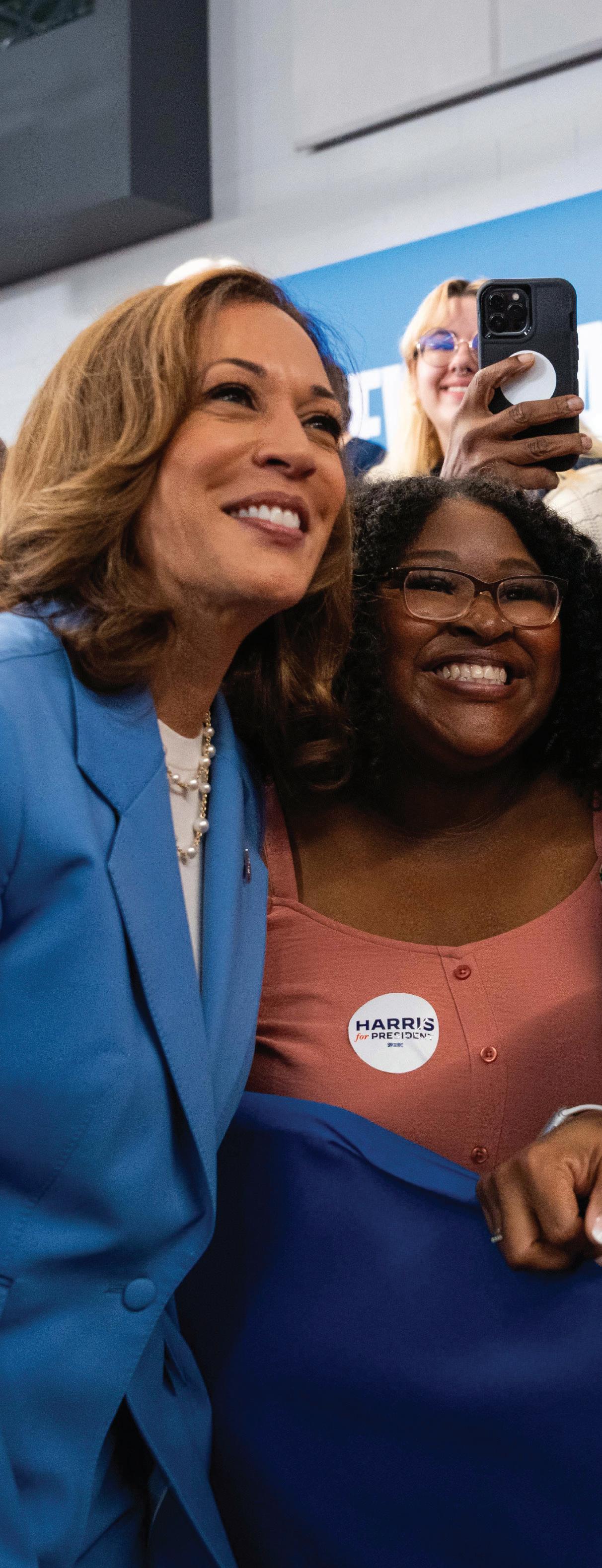
of over 370,000 and 119,000 Haitian-born residents, respectively.
Springfield officials have placed the figure today at between 15,000 and 20,000, and they say the size of the influx combined with the language barrier has created delays in receiving health care, accessing social services and using everyday government services, like getting a license. Traffic accidents involving death or injury also have increased in town, as have pressures on the housing stock.
Ohio Gov. Mike DeWine has deep ties to Haiti, having traveled there with his wife more than 20 times in support of a tuition-free school named after their late daughter. DeWine, who was born in Springfield and is a lifelong resident of the area, said Haitians who have landed in the city are hard workers, and have helped close labor shortages in factories and warehouses. But he said that a sudden influx of Haitians in a city of 58,000 has also stretched the city’s resources. Some of those frustrations spilled out at a Springfield City Commission meeting last week.
A school-bus driver said he and other bus drivers are forced to take evasive maneuvers every day “avoiding people who can’t drive.” A man spoke of a friend who was kicked out of his home by a landlord who then tripled the rent. Other residents complained about overcrowded schools and an increase in homelessness among longtime residents.
“I feel like there should be a no-vacancy sign right now,” one man said.
DeWine, at a news conference this week, said that, “Yes, we have challenges.”
“But we’re going to meet those challenges,” he said. “We may not meet them overnight, but we’re going to work at those challenges and those problems.”
Earlier this month, DeWine announced the city would get $2.5 million over the next two years for health-care demands.
Long history of fears over immigration
Trump has alleged that migrants have caused skyrocketing crime rates in cities like Springfield and Aurora, Colorado, although
authorities in both cities have debunked that. Many studies show that crime is lower among immigrants compared to nativeborn residents.
Nearly 200 years before Trump and Vance perpetuated unfounded fears that Haitians in Springfield, Ohio abduct and eat dogs and cats, Chinese laborers in California faced similar demonization. Many Chinese men emigrated from the West in the 1850s — first to dig for gold and then build the transcontinental railroad. Propaganda at the time fostered fears that the Chinese were a “yellow peril” who smoked opium and ate strange foods. This sentiment led to Congress to pass the Chinese Exclusion Act of 1882. It was the first law restricting immigration based on ethnicity.
In 1924, the U.S. established a comprehensive immigration law with a quota system based on nation of origin. It heavily favored immigrants from northern and western Europe. The intention was to limit immigrants from Asia as well as Jews and others fleeing Europe.
A monumental change came in 1965 with the Hart-Celler Immigration Act, which abolished the quotas and was intended to help immigrants bring family members with them to the U.S., a practice known as chain migration that first benefited Europeans and now aids prople from Asia and Latin America.
This story has been updated to remove an incorrect reference to the Ramaswamy town hall being sponsored by the


showed respondents favoring Harris by only a 4 percentage point margin (49% to 45%).
Vice President Kamala Harris outraised Donald Trump 16to-1 last month in Minnesota, and there’s evidence Gov. Tim Walz helped the ticket attract donations in the state and across the country, including in critical swing states.
The Harris-Walz campaign raised about $1.6 million in Minnesota in August, according to the latest filings with the Federal Election Commission. Meanwhile, the Trump-Vance campaign raised only about $106,000 in the state in August.
That lopsided fundraising contrasts with polls that show likely voters in the state narrowly preferring Harris over Trump. For instance, a MinnPost/Embold Research poll conducted in early September
Hamline University political science professor David Schultz cautioned that money does not always translate into votes.
“Generally, it’s the case that if you have more money, you are going to win,” he said.
But he said today’s voters have already made up their minds about who they will support in November’s elections, and no amount of money spent on television commercials is likely to change that.
“At the end of the day, money is not the exact equivalent of electoral support,” Schultz said. “It’s not one dollar equals one vote.”
However, he added that campaign money can help in the effort to get supporters to turn out, which can be a key factor in close elections.
But having money in a war chest does help, and the Harris-Walz fundraising success has allowed the campaign to funnel money to down ballot Democrats.
Nationally, Harris raised more than triple the amount of campaign funds than Trump did in August, giving her team a massive financial advantage as the presidential race enters its final weeks.
The Harris campaign and the Democratic National Committee entered the final two full months of the 2024 election cycle with $286 million in the bank, compared to the Trump campaign and the Republican National Committee’s $214 million, according to FEC filings.
Brendan Glavin, deputy research director at OpenSecrets, a nonpartisan campaign finance watchdog, said Trump has been raising campaign cash since his first bid
for the White House in 2016, and his donors may be tapped out.
“It’s been eight years of asking his donors for money, and how many times can you go back to people?” Glavin asked.
The Harris-Walz fundraising numbers in Minnesota spiked on Aug. 6, the day Harris chose Walz as her running mate. On that day, the Harris-Walz campaign raised $361,000 in Minnesota.
That was the largest amount the Democratic ticket raised from Minnesotans in a single day for all of 2024, beating the previous record of $267,000 raised on July 21, the day President Joe Biden dropped out of the presidential race.
In fact, Biden’s decision to end his bid for reelection created a rush of enthusiasm among Minnesotans who reacted by donating nearly $1.2 million to the
By Haley Taylor Schlitz, Esq. Columnist
False stories have long been a weapon in American politics. Irish immigrants were once labeled as drunkards, Chinese immigrants were falsely blamed for spreading disease, and African Americans have been depicted as animalistic threats to white society. Today, that same tactic is being used to target Haitian immigrants in Springfield, Ohio. Baseless rumors are circulating that they are eating pets—an outrageous and dangerous lie that has been deliberately spread by former President Donald Trump and Senator J.D. Vance. These grotesque claims are not just an attempt to stoke fear; they are part of a calculated effort to dehumanize an entire community. By painting Haitian immigrants as less than human, it becomes easier to blame them for broader societal problems. This isn’t a new strategy—it’s one that has been used throughout history to justify exclusion, discrimination, and violence. Now, it’s being employed once again to divide a nation already


I’m gonna do.” With that statement, he not only admitted to fabricating lies but also revealed the cynical political strategy behind it: weaponizing misinformation to manipulate public perception and deflect attention away from real issues. This kind of fear mongering is not just dangerous for the
By Linley Sanders Associated Press
Ohio Sen. JD Vance, the Republican vice presidential candidate, is less popular among voters than his Democratic rival, Minnesota Gov. Tim Walz, according to a new survey from The Associated Press-NORC Center for Public Affairs Research. Both Vance and Walz entered the spotlight this summer as relative political unknowns. As both running mates prepare to address a huge audience in next week’s vicepresidential debate, Democrats are more positive about Walz and Vice President Kamala Harris than Republicans are about Vance and former President Donald Trump. The findings of the new survey reinforce the challenge for the Republican presidential ticket as voting begins in more and more states.
Vance is less well-liked than Walz
The poll shows that negative feelings about Vance are considerably more widespread than positive opinions. About half of registered voters have a somewhat or very unfavorable view of Vance, up from about 4 in 10 in late July, while around

his
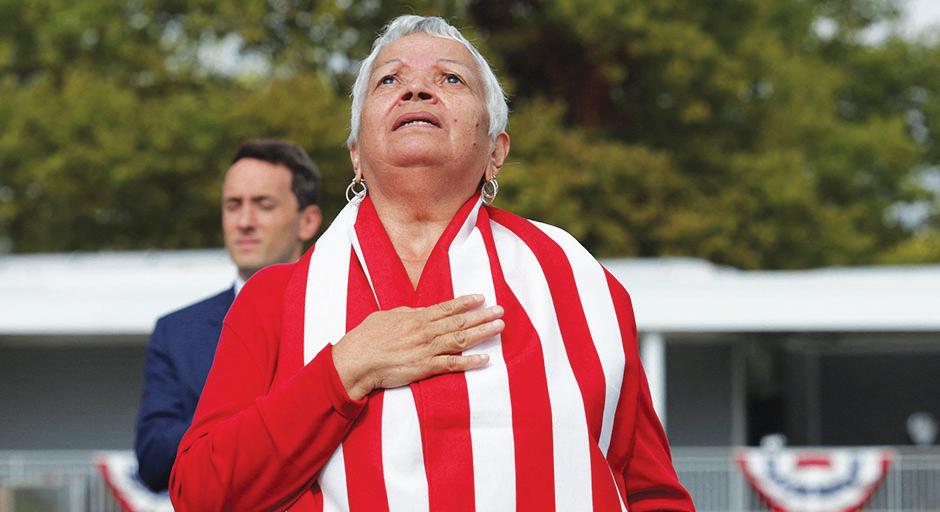
one-quarter have a somewhat or very favorable view of him, and a similar share don’t know enough to say. Walz, by contrast, is better liked. About 3 in 10 voters have a negative view of Walz, while about 4 in 10 have a positive opinion and about 3 in 10 don’t know enough to say. That difference in favorability extends to the candidates’ bases. About 7 in 10 Democratic voters have a positive opinion of Walz, compared to about 6 in 10 Republican voters who have a favorable view of Vance.
Walz is stronger than Vance among men and women Democratic candidates

“She’s not Black.”
Those words sting.
As a mixed Black woman, I understand the weight of such remarks. Janet Jackson, an icon who owes much of her success to the Black community, used her platform in a recent interview with The Guardian to cast doubt on Vice President Kamala Harris’s Blackness, claiming, “I was told that they discovered her father was white.” This isn’t just a personal attack on Harris’ identity—it’s a deliberate attempt to fracture our community for the purpose of causing harm. And worse, it echoes the same harmful rhetoric we’ve seen from outside our community, but this time, the weaponization of identity is coming from within.
This isn’t the first time we’ve seen such attacks on Harris. Recently, Donald Trump made a similarly racist comment, claiming, “I didn’t know she was Black until a

number of years ago when she happened to turn Black and now she wants to be known as Black. So, I don’t know, is she Indian or is she Black?” This tactic of questioning Harris’s Blackness is designed to create doubt and division, particularly among Black voters, by casting her as inauthentic.
The troubling aspect of Jackson’s remarks is that they come from within the Black community itself, using a distorted version of the racist principle of hypodescent—the “one-drop rule.” Historically, this rule was used by white supremacists to classify anyone with even a trace of African ancestry as Black. But Jackson’s attack inverts this principle, suggesting that being mixed disqualifies someone from being truly Black. It’s an insidious tactic aimed at disconnecting Harris from her community and casting doubt on her identity. By Jackson’s narrow definition of Blackness, prominent Black Americans like Tracee Ellis Ross, Halle
Every campaign season brings renewed attention to the amount of money influencing American politics, and who is spending it, and for what purposes. In particular, people are concerned about what is called “dark money.” For instance, recent media coverage has pointed to escalating dark money spending on both the Democratic and Republican sides.
The term sounds scary and raises the specter of shadowy people manipulating the nation’s politics. As a researcher who studies the American democratic system, I think it’s worthwhile to unpack what dark money is, what concerns it raises and what might be done to address it.
Unidentified political donors When people talk about dark money, they’re usually referring to money spent on elections that comes from sources that cannot be identified.
Federal and state laws impose some limits on contributions and require some political contributions and expenditures to be publicly disclosed. Candidates for federal office, for example, must report their campaign donors to the Federal Election Commission.
The FEC makes these reports available to the public.
Likewise, super PACs – groups permitted to spend unlimited amounts on independent electoral advocacy – must also report some information about donations, such as the identities of and amounts given by people who donate more than US$200 in a year.
But campaign finance disclosure laws have gaps.
Federal law, for example, allows certain entities – most notably nonprofits designated as “social welfare” organizations or trade associations under Sections 501(c)(4) and 501(c)(6) of the tax code – to raise and spend large sums on electoral advocacy without disclosing their donors.
Another dark money pathway involves making donations to super PACs through shell companies, which are companies set up for the purpose of hiding the financial activities of other people or groups – in this case, political contributions. Although super PACs are legally required to report who they received the contributions from, if the funds come from shell companies, the super PACs may not know and are not required to disclose where the money actually came from. That information remains hidden from public view. A lack of donor transparency raises multiple concerns. Voters may have a harder time assessing the validity of political messages or discerning whether candidates may be beholden to certain interests. Regulators and watchdogs can have trouble detecting illegal activity, such as campaign spending by foreign nationals. And unscrupulous people and groups can spread misinformation or destructive rhetoric without being identified or held accountable.
Undisclosed political expenditures
While discussions of dark money usually focus on where it comes from, the term can also describe a lack of transparency about where it goes.
Under federal law, campaign committees must report their direct disbursements, such as payments to vendors or consultants. These vendors

and consultants, however, sometimes function as passthrough entities that receive campaign funds and then purchase undisclosed goods and services. And any of these recipients can be set up as shell companies, making the flow of funds even more difficult to track.
For instance, Hillary Clinton’s 2016 campaign and the Democratic National Committee faced FEC complaints for failing to disclose indirect payments made through the campaign’s law firm to researchers who compiled a dossier on Donald Trump’s Russia ties. The Clinton campaign and the DNC paid a fine to settle the matter without conceding wrongdoing. But enforcement can be difficult. In 2020, a watchdog group filed an FEC complaint alleging that Trump’s reelection campaign directed hundreds of millions of dollars to a passthrough entity in an improper effort to hide its expenditures – which included payments to top advisers and family members that, by law, would have otherwise been disclosed. The FEC dismissed the Trump complaint in 2022 when commissioners deadlocked 3-3 on whether to pursue it. As with a lack of donor disclosure, a lack of
expenditure disclosure can deprive voters and regulators of valuable information. Lack of transparency can also invite questionable campaign practices, such as using donated funds in ways that enrich candidates, campaign staff or their associates.
Stalled federal reforms Proponents of greater campaign finance transparency have had little success pressing federal lawmakers and regulators to address dark money. Since 2010, congressional Democrats have been introducing legislation known as the DISCLOSE Act. Among other requirements, it would make dark money groups reveal major donors and restrict the use of shell companies to conceal donors’ identities. While versions of the bill have passed the House, they have repeatedly stalled in the Senate. Opponents maintain that these measures would infringe people’s privacy rights and chill constitutionally protected speech. Advocates have also made minimal headway persuading Congress or federal agencies to adopt new disclosure regulations or tighten enforcement.
The FEC, which has
visa.
The COVID-19 pandemic exposed a pressing issue: The U.S. health care system is increasingly dependent on immigrant physicians, but it’s becoming harder for aspiring ones to work and settle in the U.S. Today, 1 in 4 doctors are foreign-born,
international medical graduates. Their numbers are even larger in underserved areas – essentially, low-income, more rural parts of the country where many American doctors don’t want to work. This immigrant workforce is key to offsetting a dire physician shortage. The need for more doctors is due, in part, to America’s growing and aging population; U.S.born doctors’ unwillingness to move to poorer and more rural areas; and U.S.-born doctors’ lack of interest in going into primary care, which can be
less lucrative and prestigious than other areas of medicine.
As a result, immigrant doctors have become indispensable in hospitals and clinics across the nation. But while they’re in demand, more and more foreign doctors are starting to see the immigration process as a risky endeavor.
During the COVID-19 pandemic, I wrote my dissertation about how immigrant physicians navigate the U.S. immigration system and foreign licensing procedures. My interviewees described how a combination of stricter immigration policies and more competition for residency spots have made the U.S. a less feasible destination.
Visa vicissitudes
U.S. visas can be categorized into two categories: immigrant and nonimmigrant. Nonimmigrant visas, such as tourist, student or exchange visitors visas, prohibit holders from having what’s called “immigrant intent,” meaning that they don’t plan to use their visas to permanently stay in the U.S.
In order for immigrant doctors to be licensed to practice in the U.S., they need to complete licensing exams. They also need to obtain clinical experience in the U.S. This can be completed while on a tourist visa or a student visa, which are relatively easy to obtain.
However, all immigrant physicians – even if they’re certified specialists in their home country – need to get accepted into and complete a U.S. residency program in order to practice in the U.S. as specialists. These are intensive, supervised training programs that can last up to seven years.




Nonetheless, a majority of immigrant doctors in the U.S. will complete their American residencies on nonimmigrant visas, even though by this point in the process they quite clearly have immigrant intent. It wasn’t always this way.
There’s a special work visa called the H-1B that allows for both immigrant and nonimmigrant intent. A few decades ago, many immigrant physicians entered residency programs that sponsored H-1B visas, which served as stepping stones to green cards. But drastic restrictions to the number of people admitted into this visa program, coupled with cuts in graduate medical education funding, have directed most foreign-born doctors to what’s called a J-1 exchange visitors
an even partisan split among its six commissioners, has often been unable to get a majority to agree to take action. And the FEC’s most notable recent decisions have been to loosen, rather than tighten, campaign finance rules. Congress has barred the Securities and Exchange Commission from establishing new political spending disclosure rules for public companies, although some companies self-report more than the law requires.
States’ efforts to curb dark money
Dark money is also an issue in state and local elections. The strength of state and local transparency laws varies. Because these elections typically receive less attention and scrutiny than federal elections, money sometimes flows even more opaquely.
Unlike the federal government, a number of states and localities have bolstered their disclosure rules in recent years. Arizona, California, Colorado, New Jersey and Washington, for example, have passed new laws requiring more donor information, including about the original sources of funds that are transferred between multiple groups before being spent on electioneering.
Meanwhile, states such as Iowa, Massachusetts and Texas have adopted laws requiring campaigns to provide details about how consultants and vendors spend the campaign’s funds.
Even in these states, disclosure gaps remain. The reality is that efforts to improve transparency can seem like a game of whack-a-mole: Each new round of regulations tends to generate new workarounds. But the experiences in these states and elsewhere may offer models and lessons for other jurisdictions.
Challenges of working in underserved areas
The J-1 not only explicitly prohibits immigration intent, it also requires that doctors return to their home country for at least two years upon completing American residency training.
Foreign-born doctors nonetheless pursue the J-1 because there’s the opportunity to obtain a waiver, with limited slots that will allow them to remain in the U.S. and adjust to an H-1B visa. If selected for the waiver program, they must commit to a minimum of three years of service in a designated medically underserved area in the U.S. While this system can offer short-term relief to physician shortages, it can also lead to exploitation.
As one interviewee told me, “We hear very scary things about the J-1 waiver. The employers can take advantage and make you work more and pay less.”
For the duration of the waiver program, immigrant physicians have minimal ability to change employers without violating the conditions of the waiver – and their path to immigration. Underserved areas are often understaffed and underresourced, which can make for stressful working conditions.
Forced to go above and beyond
The challenges don’t end with the visa process. There are financial burdens as well. International medical graduates often spend tens of thousands of dollars to pay for U.S. medical licensing exams, multiple visa applications, international travel and lodging, residency and green card applications. They also spend months in unpaid positions in hospital settings to gain the U.S. clinical experience that’s required to apply for residency. Then, in order to match into residency, immigrant physicians typically need to outperform their American peers on exams. They also need to have more prestigious research qualifications and stronger recommendation letters. Still, immigrant doctors are more likely to match into less competitive residency programs. While interviewing immigrant physicians, many testified to the competition getting steeper in recent years.
“I told a friend, if you don’t have scores in upper 90s in all the exams and you’re not
Constitutional questions
Beyond the political challenge of getting stronger transparency regulations adopted, proponents of such measures also face potential constitutional challenges by opponents of disclosure. In multiple cases, including the 2010 Citizens United v. FEC ruling, the U.S. Supreme Court has rejected First Amendment claims brought by political spenders who wished to conceal their identities. In that case, the court observed that transparency helps the electorate “make informed decisions and give proper weight to different speakers and messages.” However, the Supreme Court has also recognized a right to engage in anonymous political speech. And in recent years, the court’s conservative supermajority has become somewhat more skeptical of disclosure rules, including in a 2021 case, Americans for Prosperity Foundation v. Bonta, which overturned a state law requiring charities to identify major donors. In her dissent, Justice Sonia Sotomayor warned that the court’s argument could be applied to campaign finance disclosure regulations. Therefore, even if public momentum builds for stronger transparency regulations, the Supreme Court could stand as an obstacle to such reforms. Emily Lau does not work for, consult, own shares in or receive funding from any company or organization that would benefit from this article, and has disclosed no relevant affiliations beyond their academic appointment. This article is republished from The Conversation under a Creative Commons license.

a green card holder, don’t even bother,” an Indian physician who immigrated 20 years ago explained to me. “It’s so tough.”
Stuck in limbo
Over the course of my research I noticed a trend: Many international medical graduates will come to the U.S. on student visas to pursue U.S. graduate degrees in health-related fields, such as public health, before they even start the licensing process. This helps them get their foot in the door into a very complicated immigration system and build a stronger resume as they prepare for residency applications. It’s also another expensive investment.
But even those who match into and complete residency won’t necessarily be able to stay and work in America.
Those with positive experiences from working in underserved communities often struggle to remain in their positions after their waiver contracts are fulfilled because of the green card backlog.
The average immigrant’s wait time for a green card has doubled since the national quota system was introduced in the early 1990s.
By 2018, an applicant had to wait an average of 18 months to get approved for their green card and another five years and eight months to receive it. The COVID-19 pandemic introduced new barriers and delays.
Indians, one of the biggest nationalities among immigrant physicians, have the longest wait times under the current system, sometimes waiting up to a decade to obtain the security of permanent residence. Among the 1.8 million cases currently stuck in the employmentbased green card backlog, 63% are Indian nationals.
A pending green card application is often formally
considered abandoned if the applicant leaves the country, preventing people from visiting loved ones abroad for years.
No fix on the horizon
Despite frequent calls for change and reform, these bottlenecks continue to adversely affect both patients and doctors. While the current model has its benefits, it also reflects a trend in which muchneeded immigrant professionals live in prolonged, demoralizing uncertainty. Work visas have been subject to increasing cuts and restrictions in recent years under both the Trump and Biden administrations. Conditions will likely worsen if Trump returns to office: The “Muslim ban” he enacted in 2017 adversely affected many immigrant doctors and their patients, and his calls for increased vetting will likely exacerbate existing barriers to legal immigration. A paradox has emerged: While the U.S. says it wants to attract and retain world class talent, its byzantine immigration system continually discourages potential hires. The doctors I interviewed gave a variety of reasons for wanting to work in the U.S., including better lifestyles and opportunities for professional development. But the complexity and sheer unwieldiness of the U.S. visa regime is causing the nation to lose skilled professionals to other countries with more streamlined processes. Selma Hedlund does not work for,
Walz
From 3
Democratic ticket in July.
The Democratic National Convention also seems to have prompted another surge in donations by Minnesotans to the HarrisWalz campaign. Acceptance speeches from Walz and Harris on Aug. 21 and 22, respectively, coincided with another spike
Walz vs Vance vs
From 3
tend to receive more support from women, while Republicans perform better among men. That gap is clear in Trump and Harris’ favorability numbers — but Walz is better liked than
Haitian From 3
it’s dangerous for all of us. Throughout American history, immigrant communities have been scapegoated for social and economic challenges. In the 19th century, Irish and Italian immigrants were painted as criminals, while Chinese immigrants were blamed for spreading disease. Today, Haitian immigrants are the latest victims of this pattern, framed as dangerous outsiders who supposedly bring disorder to their communities. These attacks are not grounded in facts or evidence. They are part of a calculated effort to inflame tensions and divide communities. Rather than addressing the real challenges Americans face— like healthcare, housing, and economic inequality—Trump and Vance choose to distract by demonizing vulnerable communities. This rhetoric normalizes the idea that immigrants are expendable and unwelcome, turning them into convenient scapegoats for every societal issue.
Jackson
From 3
Berry, Yara Shahidi, Naomi Osaka, Rashida Jones, Meghan Markle, President Obama and many others would be similarly disconnected from our community. The idea that someone’s Blackness could be diminished because of mixed heritage is not only wrong but dangerous. It undermines the contributions of these individuals and countless others who represent the diversity of the Black experience.
This form of identitybased attack is especially harmful because it undermines the unity that the Black community has fought so hard to build. When Jackson and others use their platforms to question Harris’ identity, they’re not just attacking her— they’re attacking the very idea of what it means to be Black in America. It’s a cynical move that uses identity as a tool to divide rather than unite. Amber Rose, another public figure with ties to the Black community, has echoed similar tactics by promoting false and harmful claims about Haitian immigrants eating pets in Ohio. Her remarks align with xenophobic conspiracy theories, further illustrating how some celebrities are willing to use their platforms to spread disinformation that harms communities of color. These actions betray the very people who once supported them, fueling the same racist narratives that have been used to oppress Black people for centuries.
The question is: why?
Why would figures like Janet Jackson or Amber Rose, who have benefited from the support of the Black community, use their platforms to harm it? One answer is self-interest. They have aligned with narratives that serve their personal gain, even if it comes at the expense
of $223,000 in state donations. Schultz said the Democratic edge in fundraising could be a result of several things.
One is that Democratic fundraising had been depressed after Biden’s dismal performance against Trump in a June debate and his decision to leave the ticket reanimated donors.
“I’m wondering how much of (the surge) is making up for lost time,” Schultz said.
Schultz also said the Democratic Party has increasingly become the party
Vance among both men and women.
About 4 in 10 male and female voters have a positive view of Walz, while about 3 in 10 men and about one-quarter of women have a positive view of Vance.
Walz also has a popularity advantage over Vance among voters over the age of 60. Half of voters in this group view Walz somewhat or
What makes this tactic especially dangerous is its long-term impact on how society views immigrants. When politicians spread false stories like these, they create an environment where immigrants are more likely to face harassment, violence, and systemic discrimination. The damage goes beyond a single town in Ohio; it sets a precedent for how we handle immigration as a nation. By framing immigrants as threats, politicians like Trump and Vance make it easier to justify exclusionary policies, mass deportations, and further marginalization. This rhetoric has real-world consequences. By tapping into fears of the “other,” Trump and Vance are fueling a dangerous kind of politics that harms not only Haitian immigrants but also the broader values of justice and equality that America claims to stand for. When lies are allowed to shape public discourse, the very foundations of democracy are weakened.
As a member of Gen Z, I know my generation isn’t willing to let these old tactics divide us. We see through the lies meant to scapegoat immigrants
of the community that uplifted them. This willingness to “sell out” isn’t new, but its resurgence at such a critical time is alarming.
For centuries, our community has faced the challenge of navigating identity under laws like Virginia’s racial integrity laws, which used the one-drop rule to deny people access to power. Today, we see this same principle flipped to question the legitimacy of Blackness from within. The narrative now suggests, “If you’re mixed, you’re not Black.” This toxic inversion of a racist principle is designed to divide and conquer.
As Black Gen Z, we understand the importance of embracing our full identities.
The first Gen Z member of the U.S. House of Representatives, Congressman Maxwell Alejandro Frost from Florida, exemplifies this with his diverse heritage, rooted in Puerto Rican, Lebanese, and Haitian ancestry. He is a proud member of the Congressional Black Caucus. A reminder to Janet and all others, being Black is about more than just genetics—it’s about shared experience, community, and the fight for justice.
This continued attack on Kamala Harris’ Blackness is an attack on all of us. It’s an attempt to fracture the unity we’ve built by making us question each other rather than focusing on the real issues facing our communities—voter suppression, police violence, and systemic inequities. We cannot allow anyone, no matter how famous, to use their platforms to divide us. Our strength lies in our solidarity and in embracing the fullness of our identities.
It’s crucial that we call out and stand against these acts of celebrity betrayal. Now is the time for us to stand united, resist these divisive tactics, and refuse to let anyone, even those within our own community, undermine the progress we’ve fought so hard to achieve.
of wealthier, college-educated people with more disposable income. He also said that Harris and Walz have both attracted support from corporations as well as Wall Street.
Walz helps raise money in swing states
There is other evidence that Walz, who has been deployed across the nation to appear at fundraisers, seems to be a magnet for donations across the country. The Harris-Walz campaign announced that the
very favorably, while about 3 in 10 have a similar opinion of Vance.
Walz is a little weaker than Harris among Black voters and women
Despite his strength over Vance in some areas, there are also some key Democratic groups where Walz still has work to do. About threequarters of Black adults have a
and distract from real solutions to the challenges our country faces. But recognizing the problem isn’t enough—we must actively resist it. We have to call out politicians like Trump
day Walz was chosen as the Democrat’s vice-presidential candidate, it benefitted from a nationwide surge of donations. The campaign said it received $36 million in 24 hours after Harris announced that Walz was her pick.
The announcement also provoked a reaction in the seven swing states whose voters are likely to determine who wins the tight presidential race.
According to a MinnPost analysis of campaign finance filings, the day Walz was chosen as Harris’ running
favorable view of Harris, while roughly half say the same about Walz. She is also viewed more positively by women; about 3 in 10 women don’t know enough about Walz to have an opinion.
In general, though, neither of the vice-presidential candidates outshine Harris or Trump among major demographic groups, and they remain less well-known than the presidential nominees,
and Vance for the harm they’re causing, and we must stand in unity with Haitian immigrants and all those targeted by these and similar racist attacks. This moment is about more than
mate, her campaign saw an average increase of 500% over the average daily donation for the previous five days in the seven swing states of Arizona, Nevada, Georgia, North Carolina, Michigan, Wisconsin and Pennsylvania.
The largest increase, 580%, was in Wisconsin, followed by Pennsylvania (532%), Arizona (523%), North Carolina (494%), Georgia (476%), Nevada (460%) and Michigan (447%).
Swing state donations also surged during the days
even among groups that are traditionally part of each party’s base. For example, about onequarter of white voters without a college degree don’t know enough to say about Vance, and around 4 in 10 voters between the ages of 18 and 29 don’t have an opinion on Walz.
This means their popularity could continue to shift as their national profiles rise.
Walz and Harris gave their acceptance speeches at the DNC in Chicago. There was an average 430% increase of the campaign money raised by the Harris-Walz campaign in that two-day period.
Ana Radelat
Ana Radelat is MinnPost’s Washington, D.C. correspondent. You can reach her at aradelat@minnpost.com or follow her on Twitter at @ radelat.
The poll of 1,771 registered voters was conducted Sept. 12-16, 2024, using a sample drawn from NORC’s probability-based AmeriSpeak Panel, which is designed to be representative of the U.S. population. The margin of sampling error for registered voters is plus or minus 3.4 percentage points.
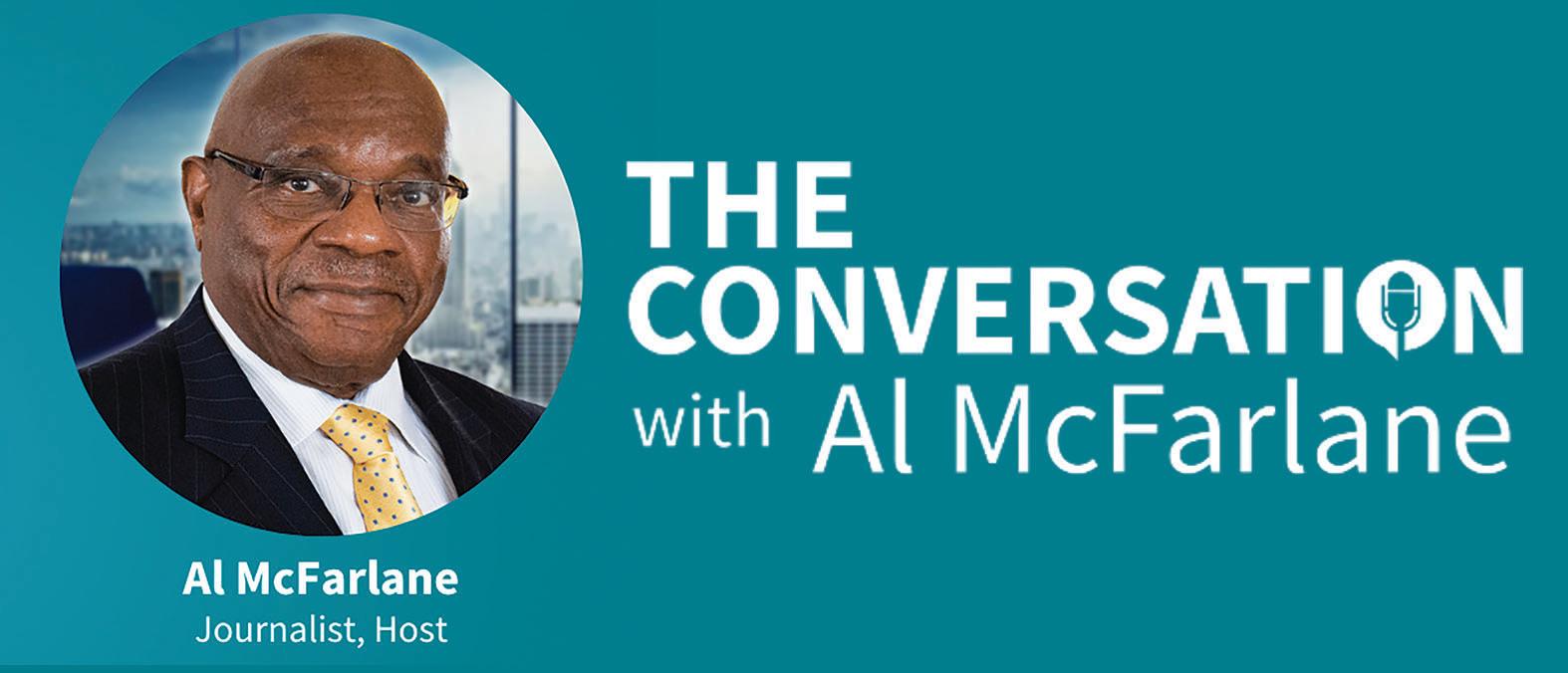

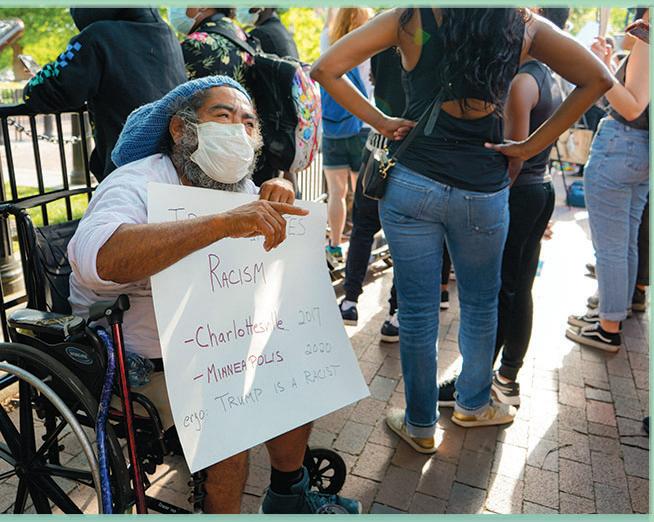













By Andrew J. Hoffman Professor of Management & Organizations, Environment & Sustainability, and Sustainable Enterprise, University of Michigan
Millions of Americans have been watching with growing alarm as their homeowners insurance premiums rise and their coverage shrinks. Nationwide, premiums rose 34% between 2017 and 2023, and they continued to rise in 2024 across much of the country.
To add insult to injury, those rates go even higher if you make a claim – as much as 25% if you claim a total loss of your home.
Why is this happening?
There are a few reasons, but a common thread: Climate change is fueling more severe weather, and insurers are responding to rising damage claims. The losses are exacerbated by more frequent extreme weather disasters striking densely populated areas, rising construction costs and homeowners experiencing damage that was once more rare. Parts of the U.S. have been seeing larger and more damaging hail, higher storm surges, massive and widespread wildfires, and heat waves that kink metal and buckle asphalt. In Houston, what used to be a 100year disaster, such as Hurricane Harvey in 2017, is now a 1-in23-years event, estimates by risk assessors at First Street Foundation suggest. In addition, more people are moving into coastal and wildland areas at risk from storms and wildfires.
Just a decade ago, few insurance companies had a comprehensive strategy for addressing climate risk as a core business issue. Today, insurance companies have no choice but
to factor climate change into their policy models.
Rising damage costs, higher premiums
There’s a saying that to get someone to pay attention to climate change, put a price on it. Rising insurance costs are doing just that.
Increasing global temperatures lead to more extreme weather, and that means insurance companies have had to make higher payouts. In turn, they have been raising their prices and changing their coverage in order to remain solvent. That raises the costs for homeowners and for everyone else.
The importance of insurance to the economy cannot be understated. You generally cannot get a mortgage or even drive a car, build an office building or enter into contracts without insurance to protect against the inherent risks. Because insurance is so tightly woven into economies, state agencies review insurance companies’ proposals to increase premiums or reduce coverage.
The insurance companies are not making political statements with the increases. They are looking at the numbers, calculating risk and pricing it accordingly. And the numbers are concerning.
The arithmetic of climate risk Insurance companies use data from past disasters and complex models to calculate expected future payouts. Then they price their policies to cover those expected costs. In doing so, they have to balance three concerns: keeping rates low enough to remain competitive, setting rates high enough to cover payouts and not running afoul of insurance regulators.
But climate change is disrupting those risk models. As global temperatures rise, driven by greenhouse gases from fossil fuel use and other human

activities, past is no longer prologue: What happened over the past 10 to 20 years is less predictive of what will happen in the next 10 to 20 years. The number of billion-dollar disasters in the U.S. each year offers a clear example. The average rose from 3.3 per year in the 1980s to 18.3 per year in the 10-year period ending in 2024, with all years adjusted for inflation. With that more than fivefold increase in billiondollar disasters came rising insurance costs in the Southeast because of hurricanes and extreme rainfall, in the West because of wildfires, and in the Midwest because of wind, hail and flood damage. Hurricanes tend to be the most damaging single events. They caused more than US$692 billion in property damage in the U.S. between 2014 and 2023. But severe hail and windstorms, including tornadoes, are also costly; together, those on the billiondollar disaster list did more than $246 billion in property
damage over the same period. As insurance companies adjust to the uncertainty, they may run a loss in one segment, such as homeowners insurance, but recoup their losses in other segments, such as auto or commercial insurance. But that cannot be sustained over the long term, and companies can be caught by unexpected events. California’s unprecedented wildfires in 2017 and 2018 wiped out nearly 25 years’ worth of profits for insurance companies in that state. To balance their risk, insurance companies often turn to reinsurance companies; in effect, insurance companies that insure insurance companies.
But reinsurers have also been raising their prices to cover their costs. Property reinsurance alone increased by 35% in 2023.
Insurers are passing those costs to their policyholders.
What this means for your homeowners policy
Not only are homeowners insurance premiums going up, coverage
is shrinking. In some cases, insurers are reducing or dropping coverage for items such as metal trim, doors and roof repair, increasing deductibles for risks such as hail and fire damage, or refusing to pay full replacement costs for things such as older roofs. Some insurances companies are simply withdrawing from markets altogether, canceling existing policies or refusing to write new ones when risks become too uncertain or regulators do not approve their rate increases to cover costs. In recent years, State Farm and Allstate pulled back from California’s homeowner market, and Farmers, Progressive and AAA pulled back from the Florida market, which is seeing some of the highest insurance rates in the country.
State-run “insurers of last resort,” which can provide coverage for people who can’t get coverage from private companies, are struggling too. Taxpayers in states such as California and Florida have
By Bedassa Tadesse and Roger White MinnPost
In nearly every country that hosts foreign-born citizens, immigration emerges as a lightning rod for controversy.
The economic realities of immigration, however, are far more complex than the negative sound bites suggest.
Far from being a burden, as critics claim, immigrants play pivotal roles in driving innovation, enhancing productivity and fostering economic growth in their adopted countries. They also elevate their adopted and origin countries’ standings in global value chains, contributing to economic resilience.
We are economists who study global trade and migration, and our recent work reveals that immigrants contribute far more to the economic fabric of nations than previously understood.
By facilitating what’s known as “trade in value added,” or TiVA, immigrants play a crucial role in helping countries specialize their production, move up the value chain and significantly enhance trade sophistication.
Moving up the value chain means progressing from producing basic, lowvalue goods to more complex, higher-value products. This shift involves improving skills, technology and production techniques, allowing a country to capture more economic value and develop advanced industries.
So, what exactly is trade in value added, and why is it important?
In today’s global economy, products are rarely made entirely in one country. Instead, different stages of production occur across multiple nations. TiVA measures each country’s contribution to a
final product, providing clearer insight into global value chains. For instance, while an iPhone may be assembled in China, its components come from various countries, each adding value.
Measuring the effect on global value chains
Our study found that a 10% increase in immigrants from a particular country residing in one of the 38 Organization for Economic Cooperation and Development member states leads to a 2.08% increase in the value added from their home country that becomes embedded in their host country’s exports to the world.
This effect was strongest in the services sector, followed closely by agriculture and manufacturing.
To understand how this works, consider Indian software engineers in Silicon Valley. Their understanding of the U.S. tech industry and India’s IT sector can lead to partnerships. These partnerships lead to Indian firms providing specialized coding services for American tech giants. The result? Higher-value U.S. tech exports that incorporate Indian expertise. This perfectly illustrates how immigrants boost trade in value added.
Or take Chinese immigrants in Italy’s fashion industry. Their cultural knowledge might help Italian luxury brands tailor products for the Chinese market and connect Italian designers with highly skilled textile workers in China. The result? Italian fashion exports incorporate Chinese craftsmanship, elevating both countries’ global fashion value chain positions.
Our findings show that immigrants are pivotal bridges in global trade networks. They leverage their unique knowledge, skills and connections to strengthen economic bonds between
nations. That’s in line with previous research showing the significant role immigrants play in fostering bilateral trade.
Why immigration matters in the global economy
In an era of increasing skepticism toward globalization and migration, understanding the positive economic impacts of immigration is crucial. Our current and previous research, and the findings from related studies, indicate that rather than “stealing jobs,” immigrants often create value and new economic opportunities that might not otherwise exist.
Immigrants bring diverse skills, knowledge and networks to their host countries that can enhance innovation, fill labor shortages and open new market opportunities. They often possess unique insights into their home country markets, helping host country firms navigate cultural nuances and business practices that might otherwise pose trade barriers. For home countries, emigrants can serve as cultural ambassadors, creating awareness, showcasing products and services, and helping to integrate their homeland into global value chains. They may also contribute to knowledge transfer, investment flows and business connections that boost their home and host countries’ economic development. Moreover, immigrants’ ability to enhance trade in value added suggests they play a role in moving countries up the economic value chain. Rather than simply facilitating trade in raw materials or essential manufactured goods, immigrants appear to boost trade in more sophisticated, highervalue products and services. This is crucial for economic development, as countries that position themselves higher in global value chains tend to see bigger benefits.
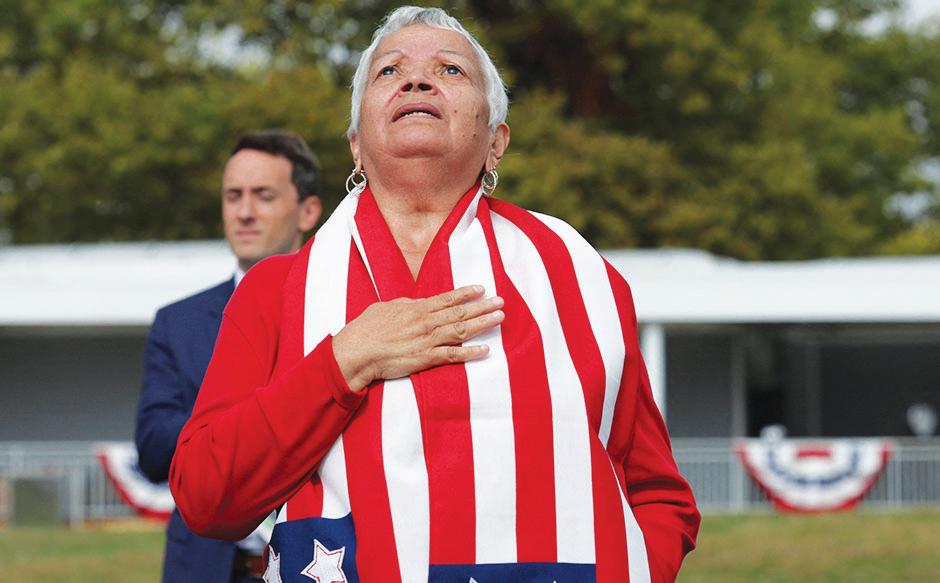
Rethinking immigration and trade policies
Our observations have important implications for both immigration and trade. For one, they suggest that restrictive immigration policies might have unintended consequences, hindering a country’s trade performance and position in global value chains. Countries that want to become more economically competitive might consider more open immigration policies. What’s more, our research indicates that immigrants’ economic benefits extend beyond the often-cited labor-market and fiscal impacts – in other words, having more workers who pay more taxes. The evidence suggests policymakers should take a more holistic view of immigration’s economic effects, considering its role in facilitating sophisticated international trade and value creation. Our results also align with previous research highlighting the potential value of workforce diversity for businesses, particularly for
firms engaged in international trade. Employees from diverse national backgrounds can bring valuable insights and connections that help their companies navigate global markets and value chains. It’s worth noting that immigrants’ impact on trade in value added varies across countries and sectors. This suggests that rather than onesize-fits-all approaches, targeted policies might most effectively leverage immigration for economic benefit. Maximizingimmigration’s positive impacts on trade and value chains also requires supportive policies and institutions that allow immigrants to use their skills and networks fully. These might include programs to assist with economic integration, language training, credential recognition and support for immigrant entrepreneurship.
A new perspective on immigration
As the global economy continues to evolve, with value chains becoming ever more complex and
interconnected, the role of immigrants as facilitators of trade and value creation is likely to grow even more significant. Countries that recognize and leverage this potential stand to gain a competitive edge in the global marketplace. Our research paints a picture of immigrants not as economic burdens but as valuable assets who enhance their host and home countries’ positions in the global economy. By making sophisticated trade linkages possible, and by boosting participation in global value chains, immigrants contribute to economic growth and development in ways that go far beyond conventional understanding.
As debates around immigration continue, it’s crucial to move beyond simplistic narratives and recognize the complex and often subtle ways that immigrants contribute to prosperity. In an interconnected world, immigrants aren’t just crossing borders – they are helping to weave the fabric of global trade and value creation.
Submitted by Head Start
Early Childhood Learning & Knowledge Center
Congratulations, your child is going to kindergarten a year from now! Making the transition to kindergarten is a big event for every child and family. You and your child may feel excited and proud about the next big step. You both may also experience some worry about the unknown and wonder how it will be at a new school.
Good news! You can start preparing for your child’s move into kindergarten with these insights from the Head Start Early Childhood Learning and Knowledge Center. Think about what would be best for your child and family as you make this transition. Consider how you can work with your Head Start program to help your child feel ready. Talk with your family service worker or child’s teacher about how your program supports the transition to kindergarten.
Consider the ideas below as you and your family get ready for this big change.
During the Year Before Kindergarten
Fall and Winter
Talk with your child’s current educator or your family service worker about the process—what to expect and what to do. Share your questions and make a plan to learn more about kindergarten.
Ask about kindergarten transition activities offered by your Head Start program. Find out when to start talking with your child about kindergarten.
Make a list of what you want to tell the new school about your child. Think about
sharing your child’s strengths, interests, and favorite activities. Find out if the new school offers any special events or kindergarten visits for new students and their families.
Learn as much as you can about the new school or schools in the district. Talk to parents and attend meetings of parent-school, cultural, and community groups, parent-led networks, and the school board.
Ask about the opportunities for parent and family engagement. What volunteer and leadership possibilities does the new school offer?
Examples may include helping with reading and homework, volunteering, or joining a school or community organization.
Spring
Arrange to visit the new school and take a tour with your child. Many Head Start programs arrange this experience for families. Use this time to ask questions and share your concerns. Make a list OF your child’s new teacher and school, including questions such as:
How do I register my child?
When will we meet my child’s kindergarten teacher?
What will the teacher expect my child to know and be able to do?
What is the school and kindergarten schedule? Is there a dress code or are uniforms required? Are school supplies provided?
Where are the bathrooms and the cafeteria?
What are visitor sign-in policies and safety
precautions?
What other questions would you like to ask? Make a list! Spend time in the kindergarten classroom and let your child explore. You can talk about what is the same and what is different from your Head Start program. Ask your child if there are questions about starting kindergarten.
Work with your child’s current educator to express in your own words what you see as the strengths and needs of your child.
Be prepared to share your child’s records with the new school. If your child receives special education or health services, such as an Individual Education Plan (IEP) or 504 Plan, ask how to ensure these services will continue.
If your child will be taking the school bus, find out if the new school offers a practice bus ride for entering kindergarteners.
Work with your child’s current educator to plan a “good-bye” event or special keepsake from the early learning program.
Summer Plan fun activities with your child. Spend time outside, visit the library and local museums, and take advantage of free events, like a farmer’s market or summer festival.
Find out if the new school has an Open House at the end of summer to visit the classroom again. Spend time having fun at the school’s playground, if available. Create and practice routines for the morning and evening that you will follow

during the school year. Read with your child, including books about going to kindergarten.
Encourage your child to speak with other children to learn what kindergarten is like.
Gather supplies for kindergarten. Be on the lookout for free school supplies in your community.
A Week Before School Begins Talk with your child about clothes and supplies for the first day of school.
Ask if your child has any questions about the first day of kindergarten.
Talk about the school routines (e.g., lunchtime, recess, the bus ride, and others).
Continue reading with your child, including books about going to kindergarten.
Help your child learn the names of the teacher, secretary, principal, and other staff at school. Review the family
schedule and routine.
Who will take your child to school or bus stop?
Who will pick up your child?
What might your child have for lunch?
Begin working toward a reasonable bedtime.
The Night Before Starting Kindergarten
Aim for an early bedtime.
Talk with your child about the morning routine and what to expect.
Pack a school bag or make lunch, if your child needs to bring lunch or snacks.
Think of ways you can offer comfort to your child while you’re apart. For example: Put a family photo in their school bag
Leave a kiss on your child’s hand to press on their cheek when they miss you
Ask your child to draw a picture for you to share
By Christian F. Nunes, MBA, MS, LCSW
Since 1964, the Head Start program has been a lifeline for generations of women and families, providing free, high-quality educational, health, social-emotional, and nutritional services and opening doors to opportunity and economic justice that had long been kept shut. Now, as Head Start approaches its 60th anniversary, it’s a great time to look back on all that the program has achieved — and look forward to what our country could look like if Head Start was strengthened. It’s been said that when it began, Head Start was not simply an “innovation” but also an “invention,” and a radical one at that. President Lyndon Johnson, a former teacher in a oneroom schoolhouse, believed strongly that education was the key to breaking the cycle of poverty, and Head Start was one of the earliest elements of the “War on Poverty” launched by his administration. He put the whole engine of government to work on disrupting the cycle of poverty that endured from one generation to the next and advanced a social justice agenda in areas where educational opportunity was denied based on race. Naturally, this intersects with the issue of economic justice for women. As Marian Wright Edelman — the first Black woman admitted to the Mississippi Bar and the founder of the Children’s Defense Fund — described it, “After the Mississippi Summer Project, the Freedom Summer of 1964, without a doubt, Head Start coming to Mississippi in 1965 was the most important follow-up and aftermath. It led to a bunch of independent people getting jobs outside of the plantation structure, not going through the state structure — where they wouldn’t have gotten jobs anywhere, except as janitors. And creating this Head Start program, those 3,000 people multiplied into many of your hundreds of elected officials today. It was the next phase of trying to build the movement.” The experts, scientists, and officials who crafted Head Start believed that a child who is physically or mentally unwell, or who is hungry, would not be able to learn, and they made health and nutrition

integral parts of Head Start. By now, Head Start has served nearly 40 million children (about twice the population of New York), birth to age five, and their families. In 2023, that included more than 833,000 children and pregnant people in all 50 states and the District of Columbia. Head Start protects the healthy development of children living in poverty and it frees parents to pursue their education or employment, opening doors to middle-class security. What’s more, Head Start is an essential building block on the path to universal pre-K, with many states integrating Head Start programs into their state pre-K system. But not everyone sees it that way, with some pushing to eliminate Head Start from state and federal budgets. That would slash pre-K, cut the number of available childcare slots, cause childcare costs for families living in poverty to skyrocket, thwart economic growth, and widen income inequality. Roughly 68% of children under age six have all available parents in the workforce, making access to childcare both a necessity for families and the nation’s economy. It’s been estimated that lack of access to reliable, affordable infant and toddler care costs $122 billion every year due to lost earnings, productivity, and tax revenue. Childcare is work that supports all other work. Mothers, who do most of the caregiving, too often must choose between staying home reducing their paid work hours to care for their children, or arranging childcare that can be so expensive that continuing to
work may not be worthwhile. The cost of childcare can be a “tax” on wages — for every hour a single mother works, she must pay someone else to
take care of her children. Head Start saves women money and connects them to a support network of other parents and service providers to help them
rise the economic ladder. At a time when most Americans live in childcare deserts, areas with an insufficient supply of licensed childcare, women can’t afford to lose the hundreds of thousands of childcare places and the network of services provided by Head Start. This is especially true in rural communities. A 2018 survey of ten states (Colorado, Georgia, Iowa, Kentucky, Michigan, Minnesota, Mississippi, Missouri, South Dakota, and Texas) found that Head Start programs provided 22% of the overall
in
and more than
in frontier counties (those with a population density of fewer than six people per square mile) in Michigan. The rising cost of childcare takes a painful, daily toll on women’s economic security. The national average price for childcare in 2023
was $11,582. For families at the poverty level, which is the income eligibility threshold for Head Start, that represents 38.6% of their income and is more than five times greater than the threshold the government has said is affordable for families to pay for childcare. Dozens of studies have shown how Head Start children and their families benefit over the long term across health, education, parenting, high school graduation rates, participation in college, employment, and earnings. One study even found positive impacts on the children of Head Start graduates. The numbers are clear, and the facts are plain. Head Start is a great example of a government that works for women and children. It must be protected, strengthened, and expanded. Christian F. Nunes is the National President of the National Organization for Women

By Arnie Stapleton AP Pro Football Writer
It sure is a good time to be a backup quarterback in the NFL, or even the backup’s backup.
The leaves are still green and already five teams have turned to their QB2 either because of injury ( Vikings, Packers, Steelers and Dolphins ) or inefficacy ( Panthers ). So much is made about developing an elite starting quarterback who shoulders the franchise’s fortunes, but it’s the other guys in the room that it often comes down to.
Last year, 66 quarterbacks started a game in the NFL. The year before that, 68. Miami is already on its third quarterback after QB1 Tua Tagovailoa (another concussion) and QB2 Skylar Thompson (rib) got hurt.
Two-time flameout Sam Darnold is reviving his career in Minnesota, which is off to a 3-0 start just like the Steelers, where Bears bust Justin Fields has been so solid in place of an injured Russell Wilson that a switchback seems unlikelier by the week.
The Packers (2-1) have won both games started by Malik Willis, whom they acquired from Tennessee less than a month ago. He was pressed into duty almost immediately when Jordan Love, fresh off signing a four-year, $220 million contract, injured his left knee in the season opener.
In Week 3, former

starter Andy Dalton replaced last year’s top overall draft pick, Bryce Young, and led the Panthers to a stunnng win in Las Vegas.
Trevor Lawrence, the first overall draft pick in 2021, lost his eighth consecutive start Monday night when the Jaguars were routed by the Bills 4710. Lawrence was yanked with 7:45 left and watched from the sideline as backup Mac Jones was sacked and lost a fumble three snaps into his first possession. Things are also



unraveling in Miami, where the Dolphins’ Super Bowl hopes seem to be teetering after Thompson got hurt Sunday, a little over a week after Tagovailoa suffered his third diagnosed concussion in two years during a loss to Buffalo.
Tagovailoa will miss at least three more games as he works through the NFL’s concussion protocol. And if Thompson misses time, the Dolphins will turn to Tim Boyle (five career starts) or Tyler Huntley (nine career starts) unless they decide to pursue a
veteran such as Russell Wilson or Denver’s Zach Wilson. The list of backups pressed into duty will assuredly grow and one of them could end up as the next version of Brock Purdy, who was a backup QB sensation in San Francisco in 2022 and then led the 49ers to the Super Bowl in as their starter last season.
Vanquishing Vikings Sam Darnold may have been slated as Minnesota’s starter until rookie J.J. McCarthy was deemed ready, but the Vikings became Darnold’s team

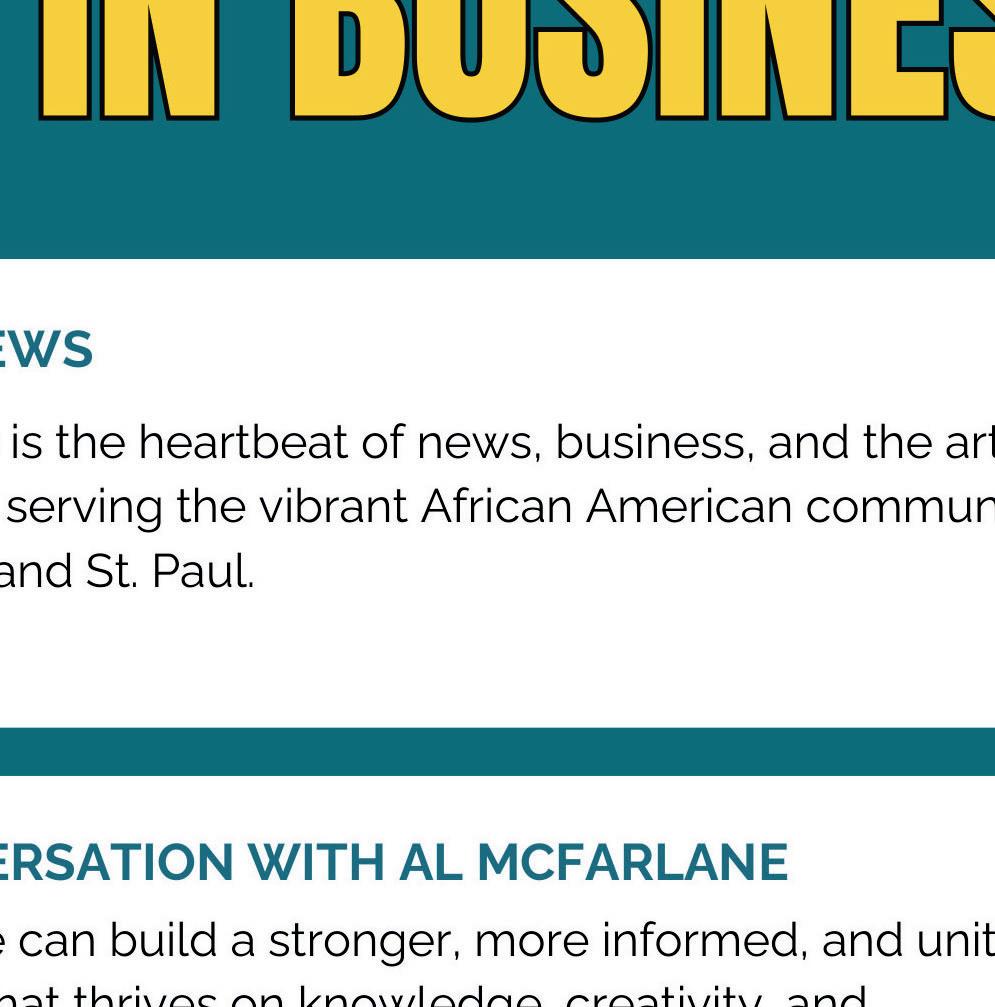


in August when McCarthy was sidelined with a torn miniscus in his right knee, requiring seasonending surgery.
Darnold, who signed a one-year, $10 million deal with Minnesota after serving as Purdy’s backup last season, has the Vikings off to an impressive 3-0 start, an unexpected balm for Kirk Cousins’ departure to Atlanta in the offseason.
Pugnacious Packers Green Bay’s Super Bowl dreams seemingly took a huge hit when Jordan Love sprained his left knee in the

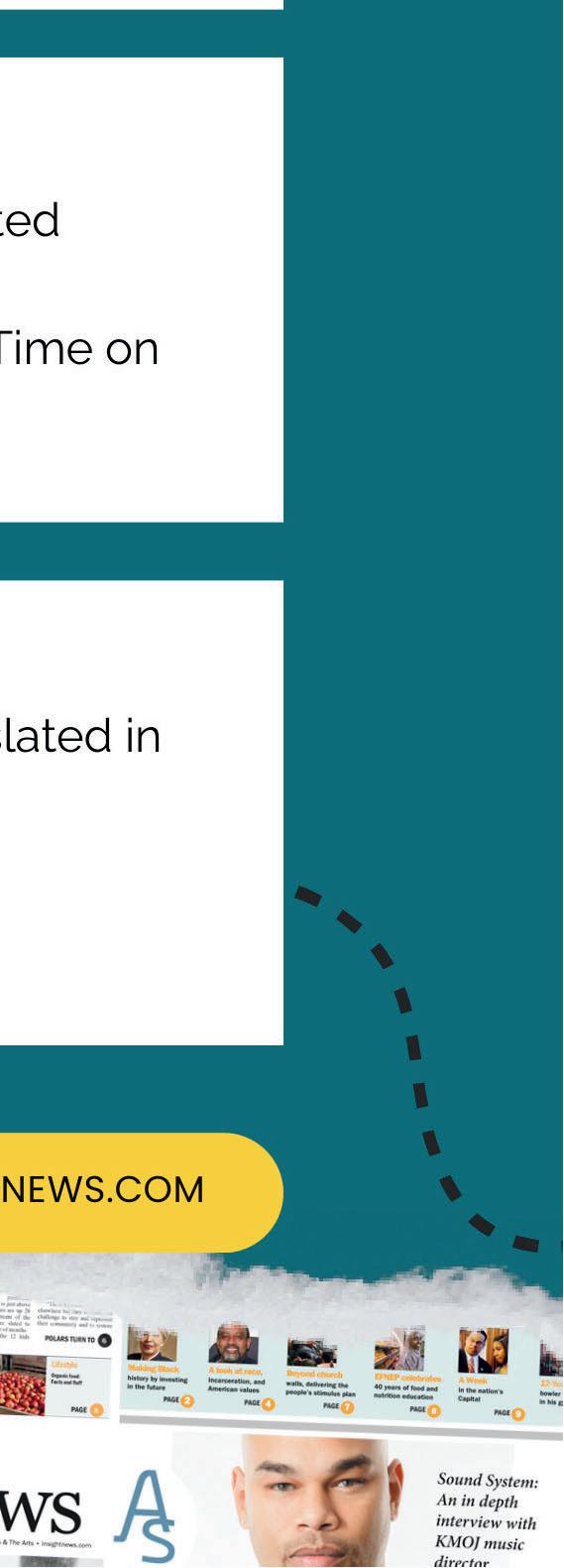
Packers’ loss to the Eagles in Sao Paulo to kick off the NFL season, but Love is proving a fast healer and Malik Willis has led them to two wins, including one Sunday over his former team, the Tennessee Titans. “What he’s been able to do, I’ve never seen something like this,” Packers coach Matt LaFleur said after Willis threw for a touchdown and ran for a score to beat his
That’s in addition to the record $85 million in dead cap charges the Broncos incurred by releasing the former Seahawks star who flamed out in Denver. Wilson’s nagging calf injury kept him out of the Steelers’ 13-6 win in the Mile High City in Week 2, although Wilson did receive a “ petty game ball,” which Fields explained went to the Steelers’ three former Broncos following their happy homecoming: Wilson, punter Corliss Waitman and receiver Brandon Johnson. Dolphins derailed The Seattle Seahawks clobbered Miami’s off
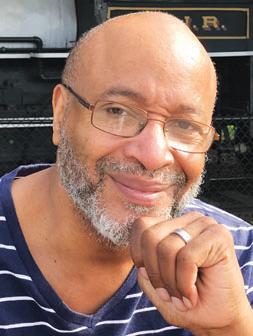
By W.D. Foster-Graham Book Review Editor
JOURNEY TO CONSCIOUSNESS
Affirmations of Healing
By Healing
As a wordsmith, I have a great love of books. Books that entertain, books that empower, books that teach, books that inspire us to grow, books that tap into our spirituality. I have had the honor of reviewing various books that affirm who we are in the African diaspora, and with that being said, I add to my library Healing’s Journey to Consciousness: Affirmations of Healing.
It is no accident that the author of this book, Corky Henderson, chose the pen name Healing after a spiritual awakening and founded M.O.M. (Mind Over Matter) to address health and wellness in our lives. In his words, “to affect real/permanent change in one’s life that we should not only focus on healing the cause of the issue, but to cultivate and balance each aspect of who we are: mind, body, and soul.”
The first portion of the book contains topics from all the primary areas of our lives: love/relationships, transition, emotions, and spirituality. Each page gives care and consideration to the connection of mind, body, and soul, which is then followed by one or more affirmations specific to the

topic. Such topics as love, our relationship with God, change, loss, and success are covered as they were revealed to Healing.
“Thoughts Become Things” reminds us to be mindful of our thought life.
The second portion of the book, M.O.M.: The Awakening, is a collection of poems inspired by the topics in the first portion. A few of my favorites are the poems “A New Day,” “My Friend,” and “I Am Love.”
I appreciate Healing’s perspective on how we show up in the world, the internal processes that it takes to grow into who we are meant to be, that we are all connected in some form or another. When
it comes to our thought life, the phrase “What we give is what we receive” stands out in my mind when I read certain passages of Healing’s work. The overall messages of God and love resonate beautifully throughout this book. Journey to Consciousness is available through Amazon, Barnes & Noble, and the Mind Over Matter website (momonline. us).
Thank you, Healing, for reminding us that there is a holistic aspect of healing as well as a physical one, in every area of our lives. We are a work in progress, and the journey is not over yet. Thank you for your gifts. And so it is.

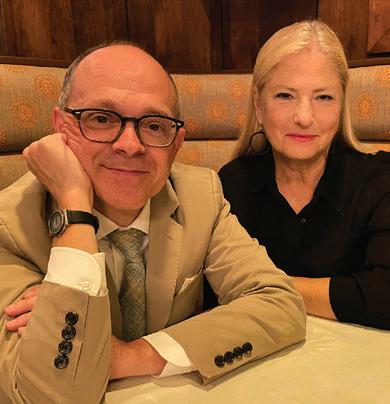

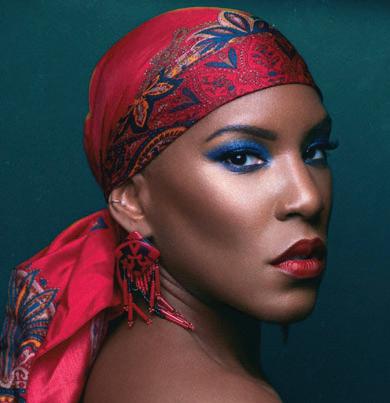












Preventive care is free by law, but many Americans get incorrectly billed − especially if you’re poor, a person of color or don’t have a college degree
By Alex Hoagland Assistant Professor of Health Economics, University of Toronto and Michal Horný Assistant Professor of Health Policy and Management, UMass Amherst
Even though preventive care is supposed to be free by law for millions of Americans thanks to the Affordable Care Act, many don’t receive recommended preventive services, especially racial and ethnic minorities and other at-risk patient groups.
The Affordable Care Act exempted preventive services from patient costsharing for large chunks of the population. This means that if you receive preventive screening and have private insurance, including through the ACA Marketplace, there should be no copay at time of service, and you shouldn’t get a bill later on. Easy enough, right?
Wrong. Our team of health economists has shown that patients spend millions of dollars every year on unexpected bills for preventive care. The main reason for this is that no specific regulations were put in place to determine exactly which services should be exempted, or for whom, or how often. This omission has left many people on the hook to pay for valuable health care they thought would be free.
Now, in our recently published research in the journal JAMA Network Open, we’ve found that the burden of paying for what

should be free preventive care disproportionately falls on some patient groups.
Inequitable claim denials Looking at data from over 1.5 million patients, our study demonstrates that insurers deny preventive claims for patients from marginalized communities at higher rates than for those from majority groups. For example, lowincome patients were 43% more likely than high-income patients to have their claims denied. In addition, Asian, Hispanic and
non-Hispanic Black patients were each roughly twice as likely as non-Hispanic white patients to have claims denied. Not only were these patients denied routine benefits, but they also saw large differences in rates of billing errors. For example, patients with a high school diploma or less experienced denials due to this kind of billing error almost twice as often than patients with college degrees. All of these services should have been covered by an insurer. Research on

preventive care access is commonly based only on claims data, which doesn’t typically have information on patient demographics. This limits a study’s ability to detect differences across patient groups. Our study, however, uses a combination of linked claims data, remittance data containing information on why claims were denied and whether they were resubmitted, and demographic data from selfreports, purchase transactions and voter registries. Together, this richer dataset allowed us to examine differences in denials based on race and ethnicity, education and income, including reasons why patients were denied care.
Preventive care is essential Equitable access to preventive health care is about more than just physicals, although those are important, too. Preventive health care includes key screenings for cancers, cardiovascular disease and diabetes, access to contraceptives, and mental health checkups, among other
services. Ensuring that insurers provide equal coverage for these services for all patients is important to improve health outcomes and quality of life for everyone while reducing future health care costs.
Our results paint a picture of the kinds of hurdles patients face when they seek health screenings. Patients from underrepresented groups were not only more likely to be told their care wouldn’t be covered. They were also more likely to have their claims processed incorrectly, leading to more frequent denials and, ultimately, larger medical bills.
Unexpected bills can affect both a patient’s current health and their future use of health care services. These hurdles can exacerbate an already tenuous trust in a fragmented health care system, making patients less likely to return for follow-up screenings.
Stacked coverage denials for patients who live with multiple marginalized identities or who are less able to advocate for themselves can further entrench racial and
socioeconomic inequities. Ensuring equitable access
Our study paints a compelling picture of where different patients may face hurdles for getting preventive care, but more research is necessary to identify how to ensure equitable access.
As our study looked only at preventive services, we will also need to see how our findings generalize to other forms of health care. More research is also needed to understand how other vulnerable patient groups, such as LGBTQ+ patients or patients with multiple chronic conditions, fare when trying to access care.
Our team is currently studying how actual bills for care differ across patient groups and how patients respond when bills arrive. In our study, more than two-thirds of denied claims were never resubmitted to insurers, meaning that many billing errors go uncorrected at patients’ expense.
Equitable policy on multiple fronts can help rectify the way preventive care is inconsistently and inequitably provided. These include uniform coverage of preventive care by insurers, standardized billing practices for physicians and improved means for patients to advocate for themselves. This can help ensure that everyone has appropriate access to lifesaving health care.
Alex Hoagland receives funding from the Commonwealth Fund and the National Institute on Aging. Michal Horný received funding from the Commonwealth Fund, the Centers for Disease Control and Prevention, and the National Center for Advancing Translational Sciences. He also received speaker honorariums and travel support from Masaryk University, Brno, Czech Republic, and the Institute of Organic Chemistry and Biochemistry of the Czech Academy of Sciences, Prague, Czech Republic. This article is republished from The Conversation under a Creative Commons license.

“Research suggests that companies that are more racially diverse outperform their competition, and we know it’s important to have racial diversity at every level of Hennepin Healthcare. A common misconception about DEI and health equity is that it is all about racial diversity, but it is so much more than that. It’s also about ensuring systems, processes, and policies will lead to sustainable institutional changes that will benefit all historically marginalized groups for generations to come. In my time at Hennepin Healthcare, I have seen the organization’s
commitment to equity grow, especially our commitment to becoming an anti-racist institution. Oftentimes, health equity departments are underfunded and consists of only one or two people. But when you come to Hennepin Healthcare, you can see the commitment we have made as an organization. Our health equity team consists of experts in the field. Our executive leadership team and other leaders actively take part in DEI and health equity training. Healthcare systems everywhere are managing extreme exhaustion, acutely ill
patients, and prolonged trauma because of COVID-19, racism, and xenophobia. Despite these challenges, our team members continue to believe that health equity is imperative. That is what inspires me. In moments when we are extremely tired or disheartened, we are most vulnerable to giving way to our biases. Behavior change can lead to systems change and a cultural shift. This is the time for us to make the changes necessary to eliminate disparities and to make sure the changes are sustainable.”




























You want to build and share your wealth. We have tools to help you do both. Together, we’re unstoppable.


Scan the QR code to learn more.